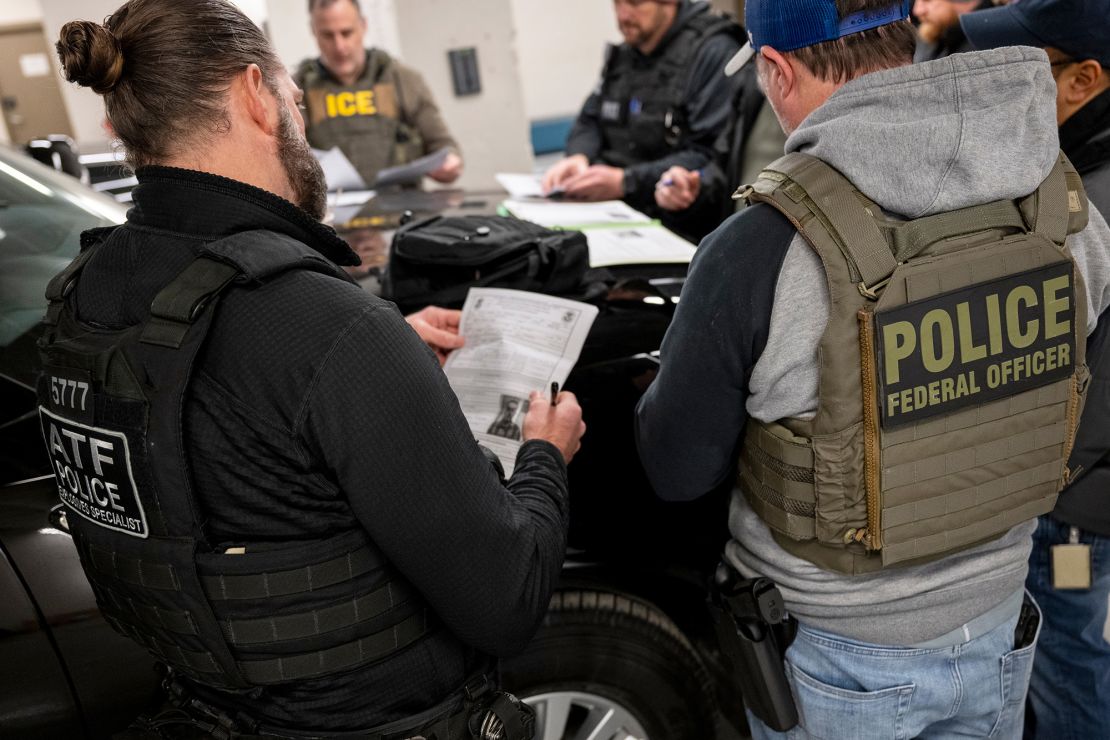The Trump administration’s recent nationwide immigration enforcement blitz has sparked a strong reaction from both political figures and immigrant communities. The operation, which saw nearly 1,000 arrests across various states including Illinois, California, Texas, and Puerto Rico, was characterized by high-profile media coverage. The federal agencies involved, including Immigration and Customs Enforcement (ICE) and the Drug Enforcement Administration (DEA), released numerous photos of agents in tactical gear conducting arrests. These images were widely shared on social media, showcasing the government’s commitment to its tough stance on immigration.
One notable aspect of the operation was the involvement of celebrity TV host Dr. Phil McGraw, who was reportedly “embedded” with an ICE team in Chicago. McGraw filmed an interview with the Trump administration’s new “border czar,” Tom Homan, and shared footage of the operations. This media attention added to the public spectacle of the immigration sweeps, which were criticized by some as being politically motivated. Illinois Attorney General Kwame Raoul expressed frustration over the lack of prior notice to his office about the arrests, claiming the operations seemed designed to create political drama and stoke division.
The focus of the sweeps, according to Homan, was on “criminal aliens,” though he also noted that the scope of the operations could expand to include fugitives. While some Democrats, such as Senator Dick Durbin, agreed that dangerous individuals should be removed, they also expressed concern that the broader actions taken by the Trump administration went beyond the goal of targeting serious criminals. The enforcement actions were reported in several states, indicating a nationwide effort to crack down on illegal immigration.
The visibility of the operations and the media coverage, including the decision to have agents wear raid jackets clearly identifying their agencies, has sparked debates over the political motivations behind the sweeps. Some critics argue that the operations are being used to score political points rather than address legitimate safety concerns. This has created a tense atmosphere in immigrant communities, where many fear the impact of such large-scale enforcement actions.
Arrests reported at homes and a church
The incident in suburban Chicago where a woman’s father, a native of Mexico who had lived in the United States for nearly 30 years, was arrested after agents knocked on his door is a powerful example of the emotional toll these immigration enforcement actions are having on immigrant families. Despite living in the U.S. for decades, many individuals in similar situations face the risk of deportation due to their undocumented status. The fact that this arrest took place at home, a place many feel should be a sanctuary, adds to the sense of fear and uncertainty in immigrant communities.
This arrest highlights the ongoing tensions surrounding immigration enforcement under the Trump administration’s policies, which prioritize the removal of undocumented individuals, even those with long-standing ties to the country. The emotional and social impact on families is significant, particularly when loved ones are taken away suddenly, and it can create widespread anxiety within the community, particularly among those who have been living without legal status for many years.
Such actions continue to fuel debates on how the U.S. should handle undocumented immigrants, especially those who have deep family connections, stable employment, and have contributed to society for many years. Advocates for immigration reform argue that these individuals should be given a pathway to legal status rather than facing deportation.
The immigration crackdown under the Trump administration is causing significant anxiety and disruption, particularly in communities with large immigrant populations. In one particularly striking case, a man was arrested by ICE while attending church in Tucker, Georgia. His pastor, Luis Ortiz, shared that while the man was being escorted out, other congregants helped him. It was reported that ICE did not enter the church but asked for the individual by name. This event highlights the tense atmosphere many immigrant communities face, where even spaces typically regarded as sanctuaries are not immune to enforcement actions.
The fear surrounding these sweeps has led to significant changes in daily life. Immigrants, both adults and children, have started avoiding work and school for fear of being detained. A Chicago-based non-profit assisting immigrants shared their concern about retaliation and mentioned that the fear of deportation is keeping families away from their routines. In response to this, some school districts like DeKalb County in Georgia have taken steps to protect students, sending notices to families that immigration agents will not be allowed on school grounds without a court order or urgent circumstances.
Meanwhile, in certain areas like Miami-Dade County, where many immigrants are legal residents, the immigration actions seem to have less impact. Republican Rep. Carlos Giménez, whose district includes a large Cuban population, expressed that most of his constituents are not concerned with the sweeps as they are here legally. He also framed the enforcement actions as part of Trump’s campaign promises.
The sweep operations, targeting specific criminal gangs such as Tren de Aragua, are set to continue across the Southeast U.S. ICE is collaborating with multiple federal agencies to increase the scope of its enforcement, suggesting that this issue will remain a significant one for immigrant communities across the country. The emotional toll on families and the societal divide created by these actions are likely to persist, adding to the complex discussions about immigration policy and enforcement.
The pressure to meet high arrest numbers in the ongoing immigration enforcement sweeps is raising concerns about the potential for heavy-handed tactics being employed by ICE officers. While ICE’s Enforcement and Removal Operations (ERO) reportedly made 113,431 administrative arrests in the fiscal year ending in October 2024, former ICE director John Sandweg warns that the push to surpass those numbers could lead to more aggressive and possibly problematic enforcement practices.
Sources claim that ICE teams across the country have been given quotas for “high-profile” arrests, with the goal of outpacing last year’s numbers. However, ICE’s acting director, Tom Homan, denies that there are formal quotas, emphasizing that his priority is targeting individuals who pose public safety and national security threats. This has sparked questions about whether the pressure to hit high numbers could lead officers to use aggressive methods to fill the gaps once the initial targets connected to criminal activity are exhausted.
Sandweg, who previously served as acting ICE director under the Obama administration, expressed concern about what might happen as the list of “easy targets” is depleted. He is particularly interested in how ICE might adjust its tactics once they’ve arrested individuals most directly tied to criminal justice issues. This concern underscores fears that the immigration sweeps, already controversial, may become even more sweeping and potentially detrimental to immigrant communities, especially those who may not have committed crimes but are swept up in enforcement operations. The situation raises important questions about accountability and whether the broader impact of these actions outweighs their intended goals.






